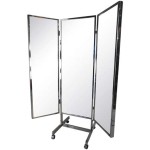How to Screen Mirror Apple TV Without Wi-Fi
Screen mirroring allows users to display the content of their iPhone, iPad, or Mac on a larger screen, such as a television connected to an Apple TV. While Wi-Fi is the standard method for screen mirroring, certain situations may require alternative approaches. This article explores several techniques to mirror an Apple device to an Apple TV without relying on a Wi-Fi network.
1. Using a Wired Connection with an Adapter
One reliable method for screen mirroring without Wi-Fi is using a wired connection. This involves physically connecting the Apple device to the television with appropriate adapters. For iPhones and iPads with a Lightning connector, a Lightning Digital AV Adapter and an HDMI cable are necessary. Connect the Lightning adapter to the iOS device, then connect an HDMI cable from the adapter to an available HDMI port on the television. Subsequently, select the corresponding HDMI input on the television. For Macs with USB-C or Thunderbolt ports, a USB-C to HDMI adapter or cable can establish the direct connection to the television.
2. Leveraging Peer-to-Peer AirPlay
Apple devices running iOS 15.5 or later, iPadOS 15.5 or later, or macOS Monterey 12.3 or later support Peer-to-Peer AirPlay. This feature enables screen mirroring without requiring the devices to be connected to the same Wi-Fi network. Peer-to-Peer AirPlay utilizes Bluetooth to establish a connection and then uses Wi-Fi Direct for data transmission. Ensure both the Apple device and the Apple TV are powered on and have Bluetooth and Wi-Fi enabled. While they don't need to be on the same Wi-Fi network, they should be in close physical proximity. The Apple TV must be signed into the same Apple ID as the mirroring device (or no Apple ID at all). Then, proceed with the standard screen mirroring process on the Apple device by accessing the Control Center or the AirPlay menu in compatible apps.
3. Creating a Travel Router Hotspot
A travel router can establish a localized Wi-Fi network, allowing for screen mirroring even without access to an existing Wi-Fi infrastructure. Connect the Apple device and the Apple TV to the Wi-Fi network created by the portable router. Once both devices are on the same network, standard AirPlay screen mirroring procedures can be utilized.
4. Utilizing Ethernet and Bluetooth with Apple TV (4th generation or later)
Certain Apple TV models (4th generation and later) offer an Ethernet port. Connecting the Apple TV directly to the router via Ethernet provides a stable connection. While the Apple TV may still broadcast a Wi-Fi signal for other devices, the Ethernet connection ensures a dedicated pathway for screen mirroring data. Combined with Peer-to-Peer AirPlay, this setup leverages Bluetooth for discovery and Ethernet for streaming, optimizing performance and reliability.
5. Employing a Direct HDMI Connection from Mac to TV for Extended Displays
While not technically screen mirroring, connecting a Mac directly to the television via HDMI can serve a similar purpose. This setup configures the television as an extended display, allowing users to move windows and applications to the larger screen. The resolution and refresh rate will depend on the capabilities of both the Mac's graphics card and the television's HDMI input.
6. Connecting to a Wired Network Using an Ethernet Adapter for Apple Devices
While less common, it's possible to connect an iPad or iPhone to a wired network using a Lightning to Ethernet adapter. This approach requires a powered USB hub and a compatible Ethernet adapter. Connecting both the Apple device and the Apple TV to the same wired network allows for standard AirPlay screen mirroring.
7. Using a Lightning to Digital AV Adapter and HDMI Splitter for Multiple Displays
If the goal is to mirror the Apple device's screen to multiple displays simultaneously without relying on Wi-Fi, a combination of a Lightning to Digital AV Adapter and an HDMI splitter can be utilized. The adapter connects to the iOS device, and the splitter then duplicates the HDMI signal to multiple televisions or monitors.
Choosing the right method depends on available equipment, technical expertise, and specific needs. Wired connections provide stability, while Peer-to-Peer AirPlay offers greater flexibility. Understanding these different approaches allows users to effectively mirror their Apple devices to an Apple TV even when a traditional Wi-Fi network isn't available.

Simple Ways To Mirror Iphone Tv Without Wifi 6 Steps

How To Use Airplay Apple Tv Without Wi Fi Full Guide

Simple Ways To Mirror Iphone Tv Without Wifi 6 Steps

How To Use Airplay Apple Tv Without Wi Fi Full Guide

How To Mirror Iphone Tv Without Wi Fi

Stream To Apple Tv Without Wifi

How To Use Airplay Apple Tv Without Wi Fi Full Guide

How To Mirror Iphone Tv Without Wi Fi

Simple Ways To Mirror Iphone Tv Without Wifi 6 Steps

Stream To Apple Tv Without Wifi








